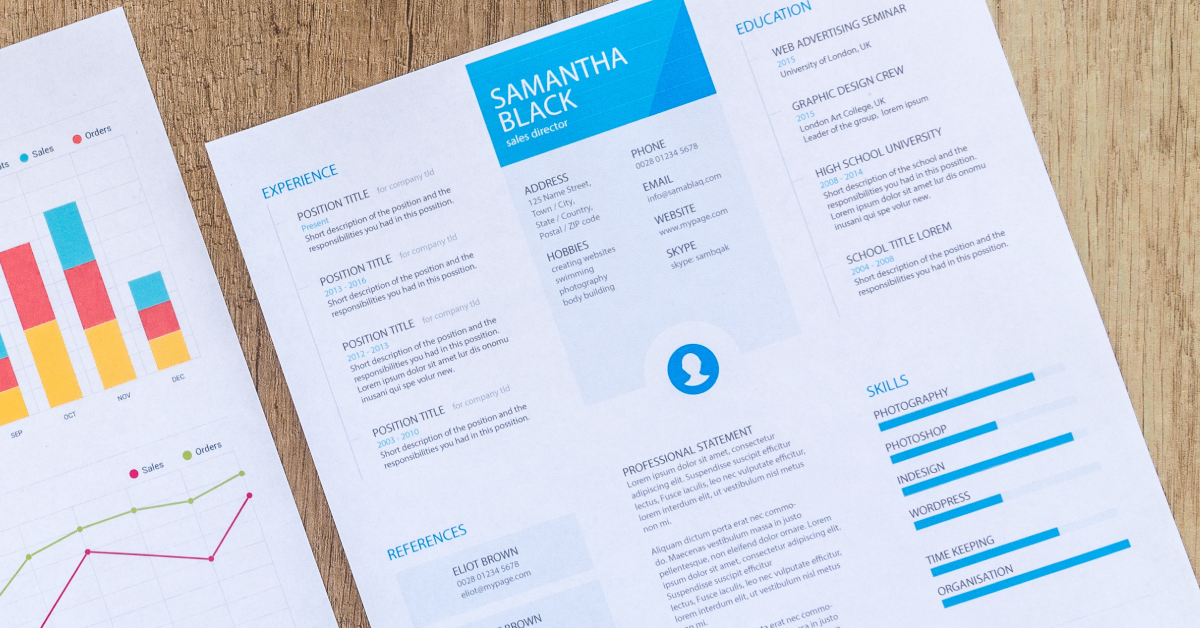Exams are already taking place and it is not long before School and College pupils in their final year take the first (or next) steps in their career. If you are thinking about starting an apprenticeship or applying for a job role, it is important to get your CV right. Your CV gives the first impression to the Employer and a summary of why you are right for the role. We have listed some tips to aid you in writing the perfect CV.
How a CV should look
Employers could possibly be looking through 100s of CVs. If you get the appearance wrong and it seems too busy, Employers may not even read it. Here’s how to keep it neat and simple!
Length
A CV should not be too long. Think of it as an overview of your skills and experience. We recommend it is between one to two pages, sticking to one if possible. At this stage, school and college leavers may only have enough to fill one page – this is perfectly fine!
Typography
When deciding what font to use, keep in mind that employers prefer a cleaner CV. Stick to using conventional fonts such as Calibri or Arial. Avoid using fonts such as Comic Sans.
The size of the font is typically 10-12 for body content, 14 for Sub-headings (such as “Work Experience”) and the main heading around 20. The main heading is usually your full name.
Use visual aids
If you want to break up content you can use elements such as bullet points, line breaks and bold formatting. This separates all the content and makes for easier reading. It also creates a bigger impact.
Bullet points can also reduce content if you feel you have too much, rather than having full sentences.
What to include in your CV
Research the position you are applying for
Before writing your CV, ensure your content is going to be tailored to the job role you are applying for. This may mean creating more than one CV if you are applying for multiple roles. This will demonstrate that you have a keen interest in the advertised vacancy.
Personal details and contact information
The most important details to include are your personal and contact details. It is vital that employers know your name and how to contact you, otherwise you will never receive a response and could potentially lose out on a job.
Personal Statement
A personal statement should include a brief paragraph on why you are suited to the role.
Example of Personal Statement
“Enthusiastic school leaver with five GCSEs looking for an apprenticeship in Digital Marketing. Possessing great written and verbal communication and an interest in digital aspects of Marketing such as SEO and Digital Strategy. Searching to develop my existing skillset in Photography, Graphic Design and Social Media management whilst gaining work experience.”
Achieved and predicted grades
Employers want to know what grades you have achieved throughout your education. If you have not yet received any results, you can list your predicted grades which should have been given to you by your school/college.
Work Experience (if any)
If you have any work experience, including voluntary, you can include it within your CV. List the key skills and responsibilities of the role. This can be done with bullet points.
Skills and Achievements
It is a great idea to add any skills and achievements you have had. Talk about anything you think worthy, such as leading a team or being a Prefect in school. If you have no work experience, skills and achievements can help increase the amount of content on your CV.
Just remember to personalise your CV! Downloading a template and changing up content slightly from others will make you seem generic to the Employer. Stand out from the crowd – create your own content.




